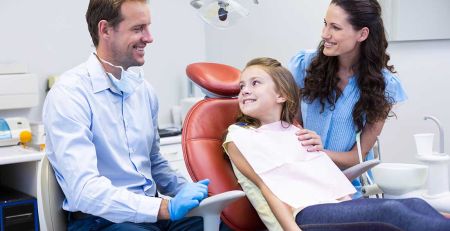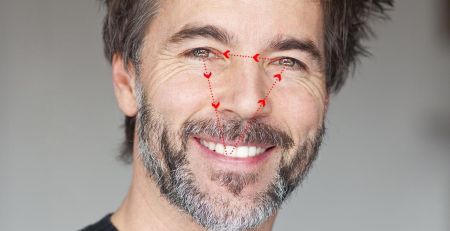Table of Contents
In recent years, the rise of direct-to-consumer (DTC) orthodontic companies has revolutionized how individuals approach teeth straightening.
Among these innovations, at home braces or clear aligners have become increasingly popular due to their convenience, affordability, and the promise of achieving dental correction without frequent visits to an orthodontist’s office.
However, this trend has raised significant concerns within the dental community regarding the potential risks and complications associated with these DIY orthodontic treatments.
Oral Dangers and Risks of At Home Braces
1. Lack of Professional Supervision
One of the primary concerns with at home braces is the lack of direct, ongoing supervision by a dental professional.
Traditional orthodontic treatment involves regular check-ups, adjustments, and personalized care from a qualified orthodontist.
These professionals monitor the progress of teeth movement and anticipate and manage potential complications.
In contrast, at home braces often rely on initial assessments based on impressions or scans the patient sends, with minimal follow-up care. This lack of professional oversight can lead to several issues:
Misdiagnosis or Undiagnosed Conditions
Without a comprehensive examination, underlying dental issues such as gum disease, cavities, or the need for extractions may go unnoticed and untreated, potentially compromising the treatment’s success and oral health.
Improper Treatment Planning
At home treatments might not always suit complex orthodontic cases, such as severe overcrowding, bite discrepancies, or skeletal issues.
Patients may use ineffective or inappropriate treatments for their needs without a thorough clinical evaluation.
2. Potential for Adverse Effects
The absence of custom-fitted, professionally supervised orthodontic devices can lead to a range of adverse effects, including:
Tooth Resorption
A condition where the root structure of the teeth begins to break down or shorten. While this can also occur with traditional braces, the risk may be heightened with at home treatments due to improper force application.
Gum Damage or Loss
Incorrectly fitted aligners can irritate or damage the gums, potentially leading to gum recession and, in severe cases, tooth loss.
Improper Tooth Movement
Without precise control and adjustment, teeth may move unpredictably or not at all, leading to unsatisfactory results or necessitating further orthodontic treatment.
3. Lack of Accountability and Recourse
At home orthodontic companies operate primarily through online platforms, which can complicate accountability and patient recourse in cases of treatment failure or harm.
Traditional orthodontic practices are subject to stringent regulatory standards and provide a clear pathway for addressing concerns or complications.
In contrast, navigating customer service channels for DTC companies can be challenging, with patients often facing difficulties obtaining refunds, adjustments, or compensation for damages.
4. Ethical and Regulatory Concerns
The rise of at home braces has sparked a debate within the dental community regarding the ethical implications of providing orthodontic treatment without direct patient care.
Critics argue that the business model prioritizes profit over patient health and safety, undermining the standards of professional dental practice.
Regulatory bodies in various countries are beginning to scrutinize these practices, with some issuing warnings or implementing guidelines to protect consumers from potential harm.
The Need for Orthodontic Dental Visits

Regular orthodontic visits are crucial for patients undergoing braces or clear aligners treatment.
These visits allow for monitoring progress, adjustments to the treatment plan, and managing any potential issues.
Here’s a detailed breakdown of why these appointments are so important:
Monitoring Progress
Orthodontic treatment is a dynamic process that requires continuous monitoring to ensure teeth move according to plan.
Regular visits allow the orthodontist to track the progress of the treatment, compare it against the initial treatment goals, and make any necessary adjustments.
Ongoing evaluation is essential for achieving the desired outcome within the expected timeframe.
Making Adjustments
As treatment progresses, adjustments are often necessary to ensure optimal results. For patients with traditional braces, these adjustments might include tightening or changing the wires, adjusting the bands, or modifying the brackets.
For those using clear aligners, it may involve moving on to the next set of aligner trays in the series or adjusting the current aligners.
These adjustments are critical for applying the correct pressure to the teeth to guide them into their proper positions.
Addressing Issues Promptly
Regular orthodontic visits are key to identifying and promptly addressing any issues that may arise during treatment. This can include complications such as bracket breakage, wire displacement, irritation of the gums, or unexpected changes in tooth movement.
Early detection and management of these issues are crucial to prevent delays in treatment or potential damage to the teeth and gums.
Oral Health Maintenance
Orthodontic treatment requires meticulous oral hygiene to prevent tooth decay, gum disease, or decalcification (white spots). Regular visits allow the orthodontist to assess the patient’s oral hygiene and offer advice or interventions if necessary.
These appointments may also include professional cleanings to remove plaque and tartar buildup that can be difficult to clean around braces or aligners.
Education and Guidance
Each visit allows patients to receive education and guidance about their treatment.
Orthodontists can provide tips on effective oral hygiene practices, advice on diet and lifestyle adjustments to protect the braces or aligners, and reassurance about what to expect throughout the treatment process.
Education is vital for empowering patients to participate actively in orthodontic care.
Emotional and Psychological Support
Orthodontic treatment can be a long and sometimes challenging journey. Regular interactions with the orthodontic team provide emotional and psychological support, helping patients stay motivated and positive about their treatment.
These visits can reinforce the value of the treatment and the anticipated outcomes, encouraging patients to remain committed to their orthodontic care.
In summary, regular orthodontic visits are foundational to the success of orthodontic treatment.
They enable personalized care, ensure that the treatment is progressing as planned, and help address any issues promptly while maintaining the patient’s oral health and motivation throughout the journey.
DIY Teeth Straighteners & The Risks Associated with Third-Party Aligners

The allure of ‘at home aligners’ offered by companies like Smile Direct Club, Byte, Wondersmile, EZsmile and Candid Co. has captivated many businesses looking to profit from the trend.
However, many users have reported the necessity of repeated realignments at their own expense, alongside a high rate of treatment failures.
DIY Teeth Alignment companies send impression kits to consumers to take teeth moulds themselves without professional supervision.
As a result, retainers are incorrectly administered to customers from bad teeth mould impressions.
Customers often face additional costs for multiple impressions and post-treatment retainers. Complaints registered with organizations such as the Better Business Bureau highlight these products’ drawbacks and negative outcomes.
One of the critical shortcomings of these services is the absence of dental professionals to monitor treatment progress and ensure the teeth are correctly aligning. Numerous customers have shared their frustrations over the lack of results after months of use.
Alarmingly, one of these individuals might even lose a tooth due to the treatment, and both are currently seeking refunds. These instances underscore the potential risks and limitations of opting for ‘at home aligners’ without professional dental oversight.
Conclusion
While at home braces offer a convenient and cost-effective alternative to traditional orthodontic treatment, they come with significant risks that potential users must carefully consider.
The lack of professional supervision, potential for adverse effects, challenges in accountability, and ethical concerns highlight the need for greater regulation and oversight in the DTC orthodontic industry.
Prospective patients are advised to consult with dental professionals before embarking on any orthodontic treatment to ensure they receive safe, effective, personalized care tailored to their needs.
As the landscape of orthodontic care continues to evolve, patient health and safety must remain at the forefront of innovation.
Book a Free First Consultation with our Gold Coast and Brisbane Orthodontic Team
In light of these concerns with third-party aligners, we invite you to explore a safer, more reliable pathway to achieving your perfect smile with Amazing Smiles Orthodontics.
We offer a complimentary initial consultation to craft a personalized treatment plan tailored to your needs, focusing on Invisible Removable Braces.
Our experienced orthodontic team is dedicated to aligning smiles with precision and care, earning us a distinguished reputation across the Gold Coast and Brisbane for our affordability and personalized approach to smile correction.
Don’t leave your dental health to chance with uncertain alternatives; trust the professionals at Amazing Smiles Orthodontics to guide you safely and effectively towards the smile you’ve always dreamed of.









